What is the difference between the LG HE2 and LG HE4? Which is newer, better? April 22 2015, 26 Comments
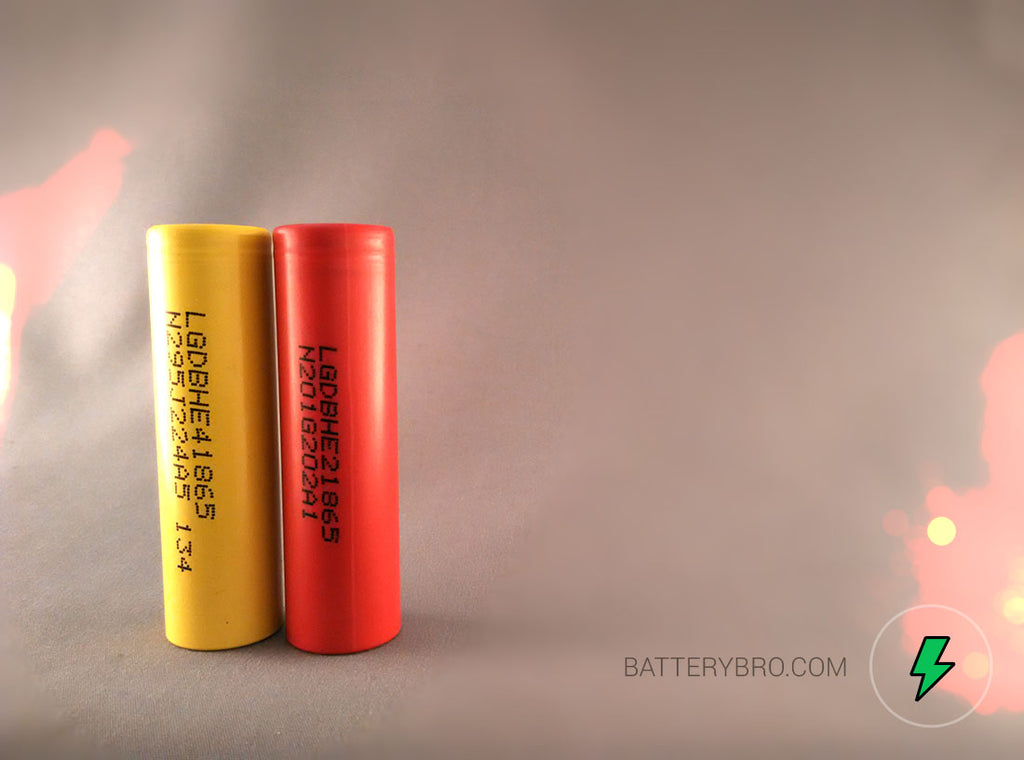
Introduction
For this blog post I will be comparing the ever-popular LG Chem 18650 HE2 battery with the LG Chem 18650 HE4 battery. Both are commodity cells of the same size, made by the same manufacturer.
Most people attribute the difference in model number to the first date of production, where it is of popular opinion that the HE2 first came to market, and that the HE4 is a newer version. Most people also think the HE4 is superior in performance. I’m going to have a quick look at the cells and see how these opinions hold up.
I purchased these two cells from an unnamed vendor in China who supplies some of the largest online marketplaces in the US with LG batteries.
While the following tests are interesting, they should be taken with a grain of salt. For a true comparison, many more tests should be performed with multiple cells in varying conditions.
Is the HE4 newer than the HE2?
Google Trends
To get a more accurate picture of when these batteries were introduced I decided to refer to Google Trends. This shows the very first time Google crawled either the phrase “LG HE2” or “LG HE4”.
Both cells were first mentioned in 2014, with a span of five months, the HE2 in June and the HE4 in December. These phrases are mentioned on Google 69,000 times for the HE2 and 30,100 times for the HE4.
The conclusion that might be drawn, is that the late introduction and scarcity of the LG HE4 compared with the HE2 is contributing to the popular opinion that the HE4 is newer.
What the official LG specification sheets really say

Luckily, LG spec sheets list a revision history. So we see, while the HE4 is newer, it is only newer by one month, and both were released as early as 2013.
Taking basic measurements

First I measure the HE2 with my digital calipers. Note the ends are non-conductive. You might want to think twice about measuring this way with metal calipers, as there is a chance you could short-circuit the battery. It measures at 65.0 mm. This is exactly to specifications on the official data sheet.

The HE2 measures at 65.3 mm. The maximum length determined by the spec sheet is 65.2 mm but I think this difference is just from measurement error on my part.

I calibrated the scale to a 100 gram weight before measuring. The weight of this HE2 battery is 44.16 grams. The weight on the data sheet reads 48.0 grams. Hmm, something seems not to be right as 4 grams is quite a notable difference.

The weight of the HE4 comes out to 45.73 grams, almost 2 grams more than the HE2. Checking the data sheet, the official weight should be 47 grams. This is within the same limits of difference and checks out.
So the question remains, why does the HE2 show such notable disparity between its actual weight and the weight described in the official data sheet?
Well it turns out the data sheet lists the maximum weight in grams. After finding a technical manual to supplement the data sheet, I found the actual weight being 43 ~ 44 grams which matches my measurement exactly. So if your numbers are off, take a closer look to see whether you are comparing to the battery's specification ratings, or to their actual ratings.
Testing
For these discharge tests we use a custom-built Arduino-based discharging unit with a special dock for 18650 batteries. It receives power through USB, with the computer plugged into A/C while testing. This enables us to record the and chart the discharge curve of the batteries. The higher amperage draw used, the lower the overall capacity will be at the end of the test. And since USB can not provide great current, each test was discharged at 2.5 amps. I did three tests of each battery, although in hindsight I should have done more.

Before I do anything I recorded the ambient temperature of the batteries. The measure 27.3 degrees Celcius. This is pretty close to the testing conditions of 25C LG performed under. I will then compare this temperature with that of the cells after they are discharged and put under a bit of stress. The energy loss in the form of heat can indicate an under-performing lithium-ion battery well.
Charging

I then fully discharged each cell down to 2.5V, and charged them using a Soshine Universal 18650 charger (green). The nice thing about this charger is the easy to read capacity display. Right away I noticed the HE2 was holding 100mAh less than the HE4. My first thought was that perhaps the LG HE2 was of a lower grade. But after the discharge tests below I reached a different conclusion.
Discharging the LG HE2

This is the discharging unit earlier. The LED displays the current voltage of the cell after it is being drained. Looking at the chart below, this photo was taken 2.5 minutes after the test began.

Lithium-ion batteries are well noted for their flat-discharge curves. The only significant drops in voltage occur at the beginning and end of a cycle. Discharging at a steady 2.5 amps resulted in fifty good minutes of run-time, and a recorded 2397mAh worth of capacity. Checking the official data sheet, the mAh should be closer to 2,500mAh (nominal) and 2,450mAh (minimum). The cut-off was at 2.5V.
What is important to note about the disparity is how the official data sheets record capacity. The conditions of such a capacity test are set to the cell's standard discharge ratings. In the case of the HE2 the standard discharge is 500mA, with an end voltage of 2.0V. The lower te amperage discharge, the higher the capacity of the cell - this runs true in all discharge tests. For example if we discharged at 20 amps (it's maximum continuous discharge rating) the capacity would be much lower. The second note is that the tests I ran cut-off at 2.5V. If I followed the official specifications for a discharge test, this HE2 would have in all certainty met its ratings with flying colors.

On discharge test 2, there was a significant disturbance in the battery's flow of current. At first, I thought I had disturbed the equipment while taking a photo. As the device is not fully grounded, touching the metal body can modify the voltage output. However, as I noted earlier I took the photo at minute 2.5 and the disturbance happened sooner than that. The small hump you see at minute five is where the actual curve should b. So this disturbance permanently modified the resulting capacity of the cell. This time it rates at 2381mAh, 16mAh lower than the previous test.

In the third and final test the discharge looks clean and the capacity rates at 2397mAh - exactly the same results as in test 1. From this we can tell, that the capacity rating of the cell almost certainly matches with its specifications. However, the disturbance in the second test leads me to believe this particular cell is of questionable quality.
Discharging the LG HE4

Here is the discharging unit in all of its glory. At the time the photo was taken the battery was discharged down to 3.85V.

In test 1, everything seems normal. It was discharged at 2.5 amps, down to 2.5 volts as its cut-off in the same fashion as the HE2. The resulting capacity of this test is 2493mAh. Checking the official data sheet of the HE4, we find the nominal rated capacity to be 2500mAh. This is very good news, and the HE4 is performing excellently at this point.
Herein lies perhaps the largest difference in specification sheets between the HE2 and the HE4. While the the HE2 was officially tested at a standard discharge of 500 mA and a 2.0V cut-off - the HE4 has a standard discharge of 500mA and 2.5V cut-off! The .5V difference in end voltage for the tests can easily account for a 50 to 100 mAh difference.
To refresh your memory, the HE2 had a capacity of 2397 on test 1, which is a 97mAh difference with the HE4. If I had let the HE2 drain all the way down to 2V, the capacity difference between the two cells could be totally eliminated.

The second test is done with all the same parameters and measures in at 2490mAh. This is a 3mAh difference which is only a -0.12% loss in efficiency.

In the third and final discharge test of the LG HE4 we find 2474mAh of recorded capacity. This is a -0.64% loss in efficiency.
When referring to the HE4's official data sheet I find the following about its cycle life: 300 cycles at 10 amps and 200 cycles (20A). The HE2 differs in this regards, as it is recorded at 300 cycles at 10 amps and 200 cycles (15A). That means the HE4 has a longer cycle life when put in high-drain scenarios of 20 amps, whereas the HE2 will degrade quicker at higher amperages.
So considering your application, if you are always draining these two cells at their maximum discharge of 20 amps - the HE2 will degrade quicker and will likely not exceed 200 cycles.
In conclusion, the two cells do indeed have difference albeit they are hard to notice. If you are constantly draining at 20 amps, the HE4 will last slightly longer. In terms of capacity, the two cells are equal. However, for the HE2 to maintain its 2500mAh rating it will have to drain all the way down to 2 volts.
Cycle Life of HE2 at 20A discharge

This is from tests with LG performed on the HE2. You can see after 200 cycles the cell dips below 2000mAh - a 20% decrease in capacity - which is LG's official cut-off point for their rating of cycle life. The cell continues operating past 300 cycles but the capacity is greatly reduced at that point.

For your reference, this chart shows the typical cycle lives of 18650 lithium-ion cells.
Temperature
Ambient temperature of batteries was 27.3C. After the HE2 discharged it averaged 36.5C and after the HE4 discharged it averaged 34.5C. This is not a significant difference, but the HE4 did perform slightly better in this regards.
Resistance Tests
Using the same discharging unit I can also shoot a certain amount of amps through each battery and measure their resistance for significant differences. I ran each test five times.

The HE2 measures a resistance of 49.0 mR.

The HE4 measures a resistance of 54.0 mR.
There is no significant difference between these two cell's resistances.
Testing with a flash-light
I did not take any pictures of this test because I did not have any hands free. I used a digital lux meter, positioned one meter away from a stand which held a flashlight. I charged both batteries to a full 4.20 V and then one by one placed each in the flashlight and measured its output in lux. The HE4 measured at 85 lux, and the HE2 at 84 lux. After one minute the HE2 settled at down at 68 lux, and the HE4 at 70 lux. There is therefore no difference between the output of these cells in this case.
Taking off the skin
The PVC tube which covers the LG HE series can be taken off, just like with any other 18650 battery. The following images can be used as a reference in identifying your own batteries. This is especially true in the case you suspect you have fake or re-wrapped battery, as the HE2 is one of the most commonly re-wrapped cells you may take off the skin of your own battery and compare it to those below to try and make a positive identification.

It is best to begin ripping off your skin at the bottom, or negative terminal. This is to avoid damaging any of the more sensitive parts contained in the top cap, or positive terminal. You can use a pin or some scissors, or just your hands. A funny side-note: the PVC smells just like balloons and is probably of similar material.

Here you can see each cell unwrapped. For the following images, the HE4 will always appear on the left. Note the HE2 has a 1, and the HE4 has a 4 marked on the steel case. These markings may vary between battery, and should not to be speculated on much. These are factory markings and indicate things like factory location, assembly line, and even which machine was used, so that manufacturers can track and debug their operations.

The top cap of these LG 18650 batteries come with white washers which protect the rim and sensitive safety circuitry underneath. The rim is where the negative and positive terminal come together and is a point of potential failure, for if he rim is pinched or a metal object is inserted the battery can short circuit and have thermal runaway. The washers are made from paper, pure white, and not overly shiny, or glossy, and of medium quality.

Both steel cases and top caps are exactly the same upon visual identification, with the only difference being the marking printed on them.

Near the top of the cell, the HE2 has a "D" printed, and the HE4 has a faded "A" printed on it. While you may speculate these are quality ratings, they are probably not and likely determine the date or location of manufacturer instead.

The final difference in markings between the two cells is that the HE4 has extra information towards the bottom end. It reads JCC2 on the top line and 2135 on the bottom line. This is probably very specific information as to where in the factory, and what machine the cell was produced. As the HE2 is lacking this marking, we can say the quality control employed on these cells is better for the HE4. This may differ from the batteries you have, and if so please leave a comment letting us know what the markings on your cell read.
Conclusions & points of interest
If you did not follow the whole post, here are the main points from the tests:
- The HE2 was released first. However both cells are from 2013, with only a five month difference in between their release dates.
- The second HE2 discharge test is not clean, indicating a possibly lower quality cell (or maybe it's just a problem with my equipment).
- The HE2 heats up faster than the HE4.
- The HE2 has to be drained all the way down to 2.0V to meet its nominal rated capacity, whereas the HE4 a more reasonable 2.5V.
- The HE2 is not as capable of high-drain (20A) discharges, having been rated at only 200 cycles for (15A), whereas the HE4 is rated at 200 cycles for (20A).
- The HE2 I tested is lacking quality control markings which the HE4 and many other commodity cells employ.
If you are testing the HE2 and HE4 yourself at home. Remember, the standard discharge they are rated for is of 500mA. Also note that the HE4 will always seem to perform better unless you take special care to set the cut-off differently (2V for the HE2, and 2.5V for the HE4). If you are in a scenario where you are always draining the battery at 20A and want to maintain a higher voltage for as long as possible, the HE4 is the better choice.
Production and availability
Both cells are currently available on the marketplace. However the HE2 is in very high production, while the HE4 is much more scarce. The HE4 is generally between 50 cents to two dollars higher in price per cell. I have heard rumors from a large factory that the HE4 was a limited production run, intended for one client and that it is no longer in production. As the cell can currently purchased, I can not confirm this rumor. But if the HE4 becomes more difficult to find in the future, this may well turn out to be true.
Pulse ratings
There are no official pulse ratings for these cells to be found in any specification sheets. Many battery vendors claim that the HE2 has a pulse rating of 35A. This is most likely entirely fabricated. A pulse rating is meaningless without two variables, the first being amperage, and the second being time. As a pulse denotes a certain amount of time, without this variable the rating is not useful. Generally in tests I have seen for the Samsung 25R, a 35A pulse will last only about one second. It is important to keep this in mind, as the HE2 most likely matches this specification, if it does at all. Also when pulsing at higher than max. continuous discharge the cells will degrade more quickly. If constantly pulsing at 35A for 1 second, the cell is likely to only last a maximum of 100 cycles rather than its full 200 because of the added stress.
These batteries should only ever be safely discharged at a maximum of 20A, as the manufacturer does not indicate what the safe pulse discharge ratings are. Added stress from exceeding ratings can cause the cell to fail, catch on fire, explode, and have a thermal runaway event which is very dangerous.
Brief chemical introduction to the LG HE2
The chemistry of the LG Chem HE2 battery is: Chemistry Li[NiMnCo]O (H-NMC) / Graphite + SiO. I can not find an official reference for the chemistry of the HE4 unfortunately. The HE2 is an NMC (nickel-manganese-cobalt) battery. NMC is inherently safer than other chemistries, and finds its use in e-bikes, power-tools, military, and even medical devices.
The dominant negative electrode (anode) material is graphite which is normal for lithium-ion cells. The second part of the negative electrode is made up of (SiO) Silicon monoxide which is a more unique inclusion. The inclusion of SiO particles in the carbon form a network of randomly distributed pores with sizes in the nano-meter range. This translates to reduced surface activity, which is important. In graphite anodes, the lithium ions travel to the outer edges of the sheet before coming to rest, and this route takes so long that there is congestion around the edges. Reducing this congestion foremost has shown to increase the cell's cycle life.
You may compare it to other chemistry types with this helpful table:

That's all folks
I hope you enjoyed this little look at the differences between the LG 18650 HE2 and the LG 18650 HE4. If you would like more information, or more posts like this, or have any questions or comments please leave a comment on this blog post. Thanks!

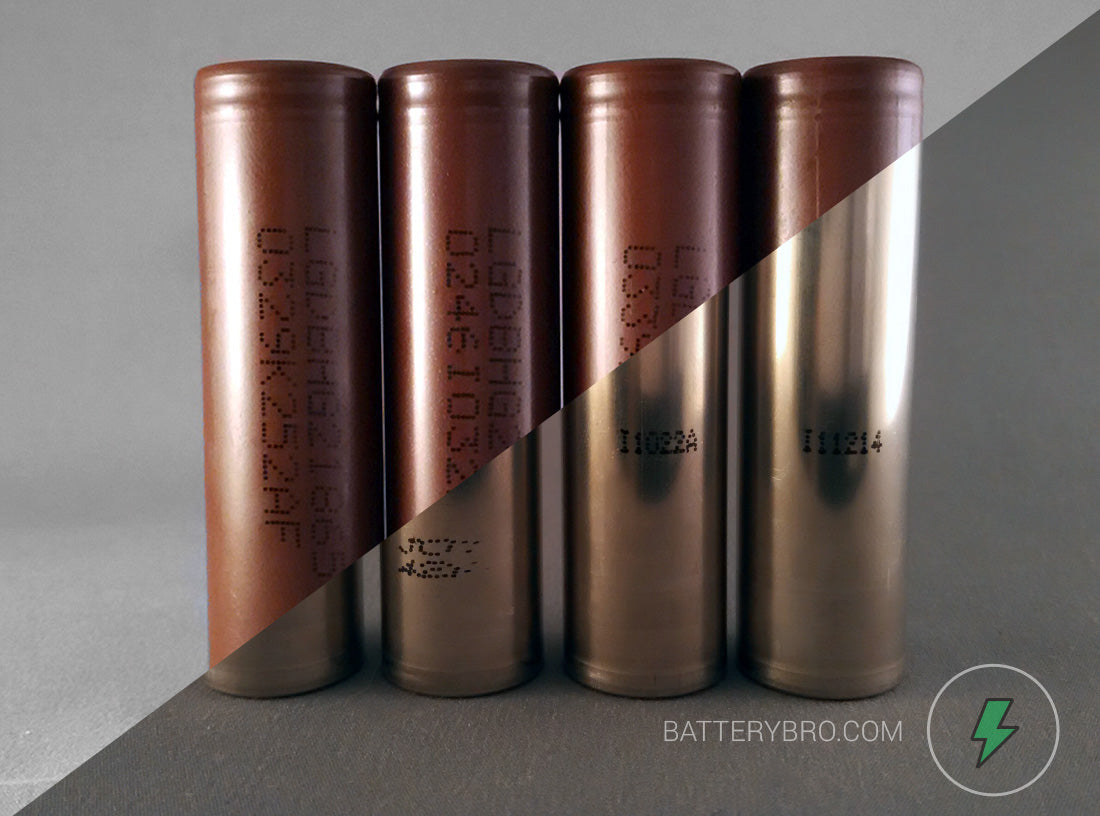
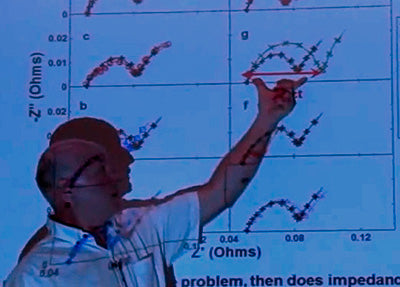
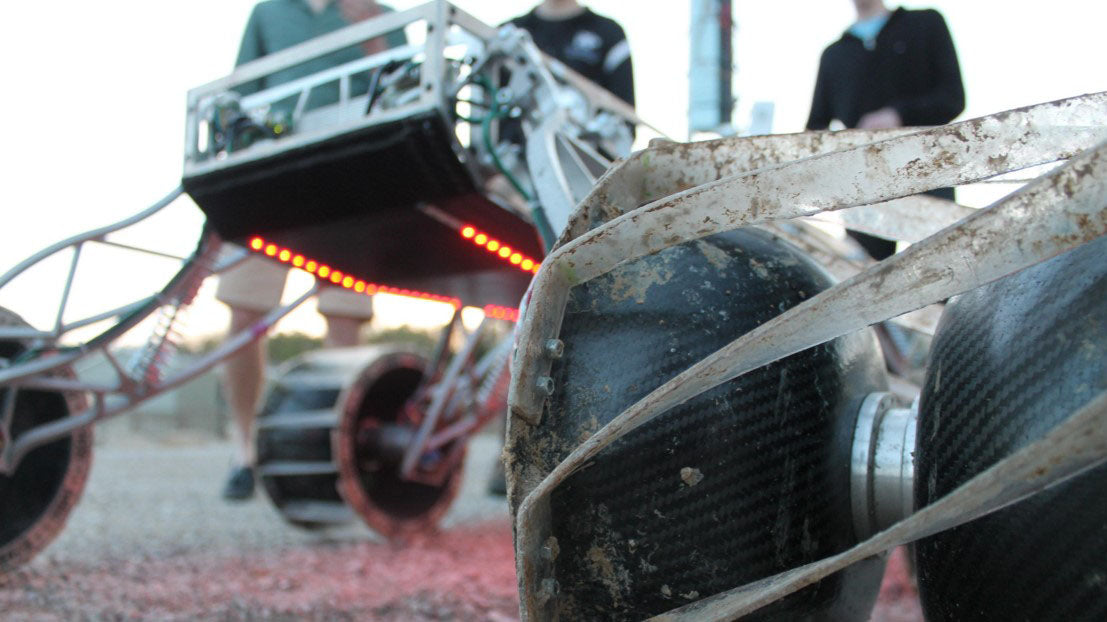



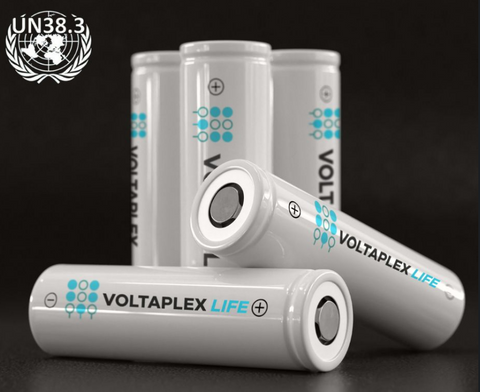

Comments
Travis Runyard on February 06 2018 at 10:04PM
Thanks a lot. I’m now the prowd owner of ebay HE4 cells. Because of your review here I canceled my order for HE2’s within 5 minutes of ordering. Almost got burned…almost.
Silas on September 23 2017 at 01:07PM
Could you provide your software and maybe a diagram or a few pictures of the Arduino set up you’re using? I have tons of batteries and would love to perform similar tests. Thank you! Love the write up.
Sam on March 25 2017 at 08:29PM
My alum alloy torch body with 3 LED warmed up to 50degC after 90 minutes when i checked it with a thermal imager. I use these batteries for my dive torch, used both LG HG2 and LG HG4 together. Is it safe?
bill on January 22 2017 at 11:46AM
great write up on these 2 batteries. full of info and easy to read. thanks!
there is a lot of good data on other 18650’s here:
https://www.e-cigarette-forum.com/forum/threads/which-high-capacity-18650-is-the-best-shootout-bench-test-results.775249/
Johnd958 on January 21 2017 at 01:47PM
I do consider all the ideas you’ve presented on your post. They’re really convincing and can certainly work. Still, the posts are very brief for novices. May just you please extend them a little from next time? Thanks for the post. dkkekdaeeadk
John on December 07 2016 at 06:03PM
My question is on the numbers that are below the actual LGDBHE2 or 4, what is the second batch of numbers stand for ? In this case the N201G ect.. on the orange and N295J ect on the Yellow, I was under the impression that those batch numbers represent the manufacturing dates ?
I am actually wondering on the LGDBHG21850 3000 mAh 20A I see some from reputable company’s with 0044B131A1 under the model number yet if I where to look on Amazon or Ebay most of them start with 0245 or various other numbers and claim to be authentic..
Do you have any idea ?
Stuart on September 23 2016 at 12:14PM
Grate stuff we need this vital infomation thanks for you taking time to do this test have you any idea of an AWT 3.7v 3000mah 40a yes that’s what it says I don’t see how this is possible can you let me no any specs on the AWT batterys as they wont work in my dna200 vape device
Thank you
Italo on March 28 2016 at 10:01AM
Thanks!
Ilan Aviv on March 21 2016 at 10:38AM
Very good and professional battery test!
thank you friend.
one thing i like to mention:
most lithium battery cells will be not stable in its first 2-4 cycles, and the capacity will change from each cycle. its got to do with the chemistry inside the cell, which the factory set it for a long storage time.
you can see it like that: the cell is sleeping on the shelf and keep its inner power, but need the first 2-4 cycles to wake up itself and gives the maximum power.
but after the 4th discharge it will be much stable in its drain current and its capacity.
so i suggest you testing this cells after 3-4 cycles, to get more accurate results.
i really appreciate this tests you made, it’s helps me alot with deciding about purchasing 1000pcs of one of this cells.
good day
ilan
Michael on March 05 2016 at 08:26PM
Thanks for the info it was very helpful.
Jake on February 29 2016 at 12:04PM
Thank you so much..!! very informative …..
Bryan Copeland on December 28 2015 at 04:35PM
This was a very well thought out, clear and concise post. I run a blog and you have set a standard for me in how to present only facts, control testing parameters to ensure fair evaluation of subject matter and not to allow any preconceived notions by yourself affect the outcome of the testing. You certainly used the scientific method. As a side note and as I interpreted your testing, there is almost no appreciable difference in the two. If price is considered (application not withstanding), the HE2 is the better option. I have see a $1.50 – $2.00 per cell difference in price for nominal performance difference. I own multiple cells of both models. I use them for Vaping. My variable voltage/wattage or temperature control (measured in Joules) unit mod (battery operated energy output device) which heats a coil measuring 0.25 ohm, wicked by organic cotton and fed by a tank of 4-5 ml of e liquid (a vegetable glycerine, propylene glycol, nicotine USP, water, flavoring mixture) to the point of vaporization (a very fancy “e cigarette”) uses dual 18650 high drain batteries to power a atomizer (just described). I can’t tell the difference between HE2 and HE4 cells. They are both excellent batteries though, as I use Samsung, Sony and other similar 18650 cells and the LG’s are among my best. But thank you for that wonderful analysis and example of good blogging!
Osama Dardeer on December 19 2015 at 01:01PM
That was one very comprehensive test I’ve ever come across. Although, there are lots of information, yet it’s very easy, and definitely not boring, to extract and follow conclusion.
Thank you for the good work
Anton on November 30 2015 at 06:21PM
amazing write-up. THANK YOU!
Anton on November 09 2015 at 05:23AM
@Langmuir
The diameter of both the LG HE2 and LG HE4 are identical, measuring in at: 18.3 + 0.2/-0.3 mm ( Max. 18.5 mm )
Sophia Taskova on October 30 2015 at 10:06AM
Thanks for this info, it was very informative and clear! Appreciate the time you took out to explain this. It was extremely helpful! ?
Langmuir Blodget on October 29 2015 at 03:07PM
I am interested to know if they are the same diameter. I have found that the Samsung 25R is a little bigger in diameter, which can be a problem in my application
Christian on October 18 2015 at 12:26PM
Wow! Awesome analytics! Thank you for making your intellectual curiosity and insights freely available!
Trevor Hansen on August 14 2015 at 01:22PM
i would like to get one of those dischargers could you send me a link or tell me where to find one
Thanks so much
Trevor Hansen
Anton on August 04 2015 at 11:53AM
@Masclock – Yes unfortunately that cell is not rated at 35A.
naseee on July 12 2015 at 08:19AM
Thank you for all the information.. Give me an idea of which battery i want to get..
Ariel_MX (ECF) on June 11 2015 at 08:22PM
Just wanted to share the specs document of each battery, it looks like it is the same battery (according to the specs):
Revisión history (specs document):
HE2: 2013-01-30
HE4: 2013-05-30
Max Weight HE2: 48.0 gr
Max Weight HE4: 47.0 gr
HE2: http://www.powerstream.com/p/LG-ICR18650HE2-REV0.pdf
HE4: https://cdn.shopify.com/s/files/1/0674/3651/files/LG18650_HE4.PDF
Raj on May 29 2015 at 06:46AM
Thank you so much for this awesome testing and review for everyone to use. A minor detail, I believe you confused the HE2 and HE4 when you said the HE4 will always be on the left side of photographs once the sleeves were removed. Thank you again!
Redndeyes on May 27 2015 at 12:08AM
God bless you for takin the time and interest. This write up IS simply amazing. THANK YOU!
Tuck on May 11 2015 at 06:53PM
amazing write-up. THANK YOU!
Masclock on April 22 2015 at 08:53AM
Follow the spec then I guess. Bottom-line is that the HE4 is better then right? I thought my HE2 was 35A but i guess I’m wrong?